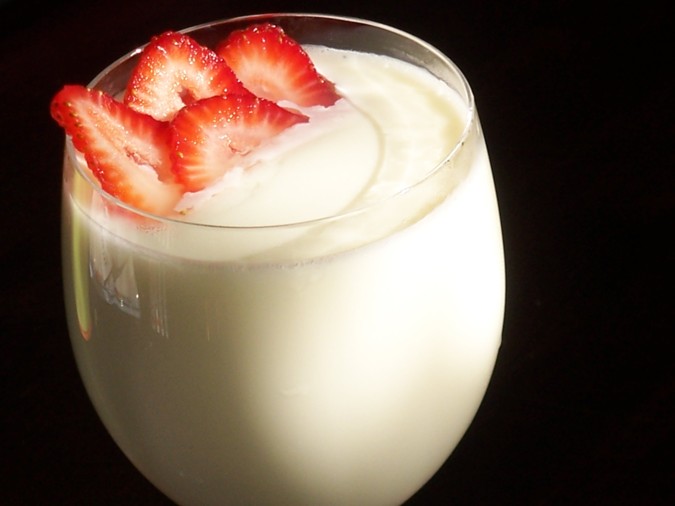
A nice cup of hot tea and a slice of this cake are best enjoyed in the company of good friends
Roundup 1 —-Roundup 2
 For this season’s edition of Novel Food—one of my favorite blog events, co-hosted by Simona of Briciole and Lisa of Champaign Taste—I chose to recreate a food item from Jane Eyre, Charlotte Brontë‘s masterpiece.
For this season’s edition of Novel Food—one of my favorite blog events, co-hosted by Simona of Briciole and Lisa of Champaign Taste—I chose to recreate a food item from Jane Eyre, Charlotte Brontë‘s masterpiece.
This also goes to Susan’s Yeast Spotting
I read the book for the first time many years ago, in Junior High School, and loved it ever since. Over the years I returned to it once in a while, and the story never ceased to fascinate me. In time I realized what I found consistently so appealing in it. The novel contains all the necessary components of Romantic literature: a love story full of passion, mystery and tragedy, a good touch of the supernatural and a happy ending against all odds.
However, besides all of that, what truly brought me back to this novel is how its main character, Jane, is portrayed. She is a young woman, orphaned and destitute, very smart and barely pretty—in other words a person apparently lacking all of the desirable qualities that would ensure her any happiness in life or at least a comfortable place in society.
And yet, even in the worst of her circumstances and situations, Jane never compromises, never gives up her dignity as a person, never loses her solid moral principles. She is able to balance a good heart with cool rationality, always seeing beyond appearances and never settling for the easiest path. It was—and is—her strength in being able to say no, even if compromise would seem to ensure her gaining everything she most dearly wishes, that I find admirable, as is her unshakable belief that the qualities of the heart and the spirit have a value very much above those of wealth, position and social approval.
In the book food is mentioned quite often, from the dreadful meals at Lowood, the boarding school for orphaned girls that Jane attends—and survives—for eight years, to that offered to Jane after she leaves Thornfield and is rescued by the Rivers family.
Among all of the possibilities, I chose to bake a seed-cake, like the one Jane shares one perfect evening with her beloved schoolmate Helen and their teacher Miss Temple. The reason of my choice is that, to me, that simple cake eaten with friends and kindred spirits shows how, despite the dreariest circumstances, the comfort of true friendship can lighten one’s heart and console of any sadness.
Miss Temple invites Helen and Jane for tea:
“[…] she got up, unlocked a drawer, and taking from it a parcel wrapped in paper, disclosed presently to our eyes a good-sized seed-cake.
‘I meant to give each of you some of this to take with you,’ said she: ‘but as there is so little toast, you must have it now,’and she proceeded to cut slices with a generous hand.
We feasted that evening as on nectar and ambrosia; and not the least delight of the entertainment was the smile of gratification with which our hostess regarded us, as we satisfied our famished appetites on the delicate fare she liberally supplied.”
In the many vintage cookbooks I have read I found different versions of seed-cakes, some rather plain, made with a yeasted and sweetened dough and others closer to pound cakes, very sweet and rich in eggs and butter. The common trait between all of these versions is, of course, the caraway seeds that speckle their crumb. Caraway seed once was used in sweet baked goods such as cakes and biscuits and not limited to savory ones. The effect is amazingly good: the pungency and complex aroma of these seeds, as well as their slight crunchiness provide a wonderful counterpoint to the sweetness and tenderness of the cakes.
As much as I love the flavor of caraway in the tangy sourdough ryes found in the baking repertoire of Central and Eastern Europe, I have to say that tasting caraway in a sweet baked good allows to appreciate this pleasant spice even more.
I tried more than one version, and it was difficult to choose one among all, since all have pleasant qualities that made them worth recommending. Charlotte Brontë does not give a detailed description of the seed-cake Jane and her friends have together with tea. Given the time at which the novel was published (1847) I thought at least I could write off any of the more recent recipes made with actual baking powder, which became popular only in the late nineteenth century. I tried a yeasted version made with only a little sugar and butter and no eggs, and another rather rich made with great quantities of all of these ingredients. The yeasted, plainer version is my favorite, and is the one I feature here.
From the original recipe by Margaret Dods
in: “The Cook and Housewife’s Manual”, 1828—UK
Ingredients
1/2 lb white sugar
2 lbs bread flour
1 tbsp active dry yeast
2 cups whole milk, plus more as needed
1/2 lb butter
1 oz. caraway seeds
a pinch of allspice, nutmeg, and ginger
Mix the sugar and flour in the bowl of an electric mixer. Scald the milk and let it cool to lukewarm. Dissolve the yeast in 1 cup of the warm milk and pour it over the flour-sugar mixture. Mix on low speed until some of the flour and the milk form a soft soupy dough (the rest of the flour will stay underneath. Cover the bowl and let the sponge ferment until doubled and bubbly. Switch to the dough hook, add the ground spices (except for the caraway) and knead until the dough starts to come together, adding the rest of the milk by the tablespoon as necessary (the dough should not be too soft at this point).
With the mixer running add the cold butter, diced, and knead until the dough is well developed, supple and smooth. Once the butter is well incorporated add the caraway seeds and knead a little more until well distributed in the dough.
Let the dough ferment until doubled in a covered bowl. Shape into two oval or round loaves and bake in a preheated oven at 350F (180C) for about 50 minutes, or until nice and golden. The loaves should be allowed to cool on a rack and sound hollow when tapped on the bottom.
If you prefer to use a bread pan, you will need two 9×5-inches pans.









 Ivy of
Ivy of 



